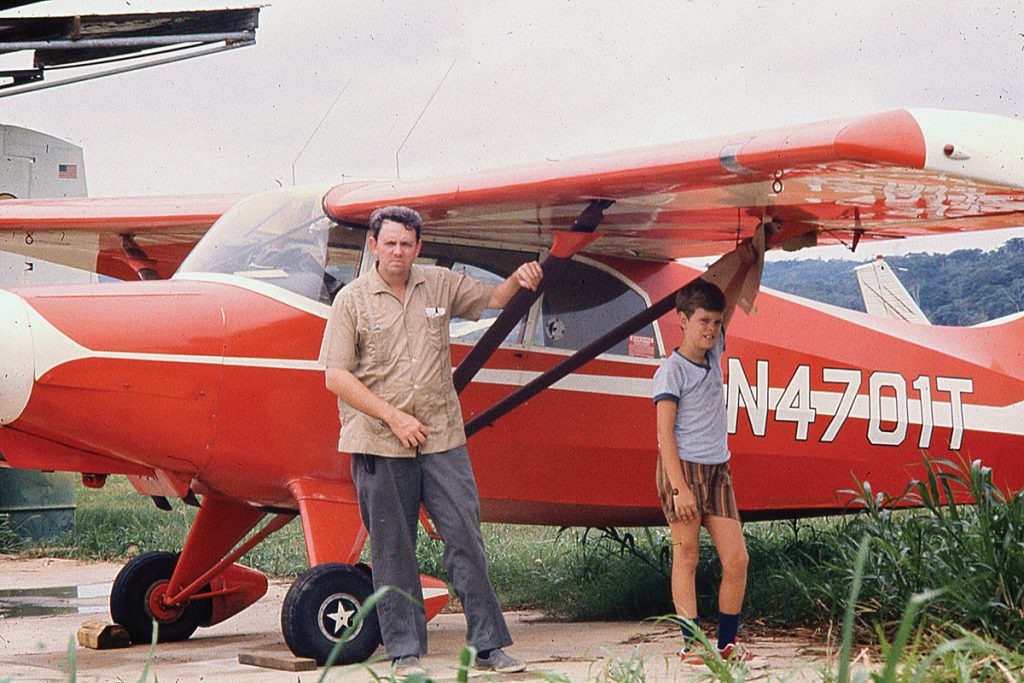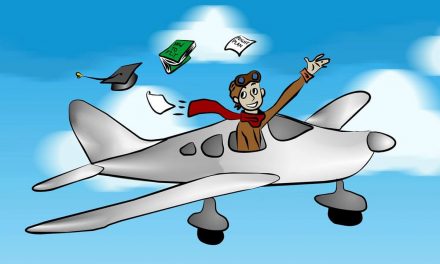
By John Brown, CISSP, CFI, AGI, CP-ASEL, ASES/AMEL
Buying an airplane is a fun and exciting process. But it’s not the same as buying a car. Make sure you have the right mindset when you start and don’t fall in love until after the deal is done! Be mentally prepared to say no.
Here are the 12 steps I take when looking at an aircraft to purchase and the ones I recommend you take as well before you sign on the bottom line. This assumes you have already done the all-important mission profiles and the aircraft you are looking at fits the mission(s). Also, keep in mind that if you have children, your family will grow in ballast over time. Kids get bigger, heavier, and the same with dads and moms, and the stuff you want to take increases as well.
Having spent days (sometimes weeks) going over the usual “For Sale” sites, I will create a short list of possible aircraft. From this list, I apply the following steps. These steps help filter and reduce my short list.
- I start with background research on my prospective aircraft, getting full copies of the logs (airframe, prop, engine, current weight and balance) in a digital format. If they’re not available, I find another aircraft. I personally read each and every page of every log entry and make a spreadsheet that dates each annual I can find in the logs. Then I calculate the time between each annual to see if there are missing years, growing periods of inactivity, etc. The logs can give me a feel for whether or not this plane has been cared for. I check the real weight and balance numbers against my mission profile, if it doesn’t work, I stop there.
- Next, I go to aviationdb.com to search the serial number and/or tail number. I’m looking for ownership history and accident history. I also check both the NTSB and FAA, as they’re different. If I find a gear up incident in 1993, I look for a log entry for the repair. I will also check out the current owner via the Airman section of aviationdb.com.
- I punch in the tail number by itself into a Google search. You would be surprised at what pops up in Kathryn’s Report, news articles, previous sell price, etc. I’ve also looked things up in newspapers.com. That gear-up in a corn field from 1977 may never have hit the FAA/NTSB, but the local news might have it. While it isn’t a showstopper, I do use it as an indicator of the honesty of the logs, seller, etc. Just another data point.
- I visit FlightAware or a similar site and punch in the tail number. When was the last flight, how long, and from where to where? (I pay FlightAware so I get access to more flight history). I look at the flight tracker for info about two-hour flights. Altitude and speed will tell me some real-world performance info and also tell me if the autopilot is working.
- I call the seller and have a chat. We pilots love to talk. I usually have a short list of questions that I ask. I’m also trying to get a “feel” and see if there are any concerns. One gentleman I spoke with kept telling me about the tens of thousands he spent on new avionics and how nice the plane is. The new avionics were installed almost 20 years ago and are not current IFR gear. But to him that was a major valuation point. If how the seller values are vastly different than how you value the airplane, you may have a problem getting to a purchase price.
- If the aircraft has a JPI or other similar digital engine monitoring system, I try to get a full data dump from the seller. It’s very useful information and free of baloney.
- I call my insurance agent to find out what this plane will cost per year and what requirements the insurance company has. I need to know this up front, as it factors into the total cost of ownership. Some airplanes are just too expensive to insure. Don’t count on getting the same rate as the current owner has. This is a place to stop. If insurance is too much, then don’t go forward.
- I then use Savvy Aviation’s free quick look pre-buy service to take a run through the logs.
- If at this point, I’m still interested, I’ll enter into a contract that’s contingent on me liking the pre-buy. In other words, if the pre-buy is good, I’m buying the plane. If it’s not good, then my escrow money comes back and I walk. Make sure your contract allows you to “walk away” for pretty much any reason. If you find things you want the seller to fix, but they refuse, you can walk away. You and the seller can agree to adjust the price based on things needing to be fixed. If the seller isn’t willing, you can walk away. Personally, I’d prefer my shop do the repairs, since I’m going to be the new owner.
- I will hire AeroSpaceReports.com (AOPA discounts the cost) to pull a full package on the aircraft from the FAA. You will get full title/chain of ownership, all accident reports, all 337s on file, liens, etc. I read them all and compare the 337s with the logs to see if they jive. You are now going to start spending money on this transaction. If the aircraft has a lien, I’ve been known to call the lender to get “pay off balance” information. Knowing that the seller has $80,000 payoff will help you know the “lowest number” they will go down to.
- I will then hire Savvy Aviation (read spend money) to conduct a managed pre-buy. The money is well worth it. They have a good checklist and know lots of shops all over the country. They will find several shops within the aircraft’s local area that haven’t done work on it and will do the pre-buy. Remember a pre-buy is not an inspection. It is a trained and skilled look-over of the airplane. When you do a pre-buy, you really should have an oil sample sent to Blackstone Labs, and have the filter cut open by the shop. Wait for the report from Blackstone. If you overnight the sample, rumor is that they will test it sooner, but you didn’t hear that from me. Blackstone is 100% worth the $40, and every owner should have this as part of their normal oil change process. Also, ask the shop doing the pre-buy what they will charge to convert the pre-buy to a regular annual since they will have the plane opened up anyway. This will have the benefit of starting that 12-month clock closer to when you take ownership. If you can, try to take a test flight in the plane. This isn’t always possible, but if you can, do it!
- Based on what the shop tells Savvy, we (buyer and Savvy as a team) make an educated decision on the purchase. Just note that Savvy won’t and can’t make the decision for you. They can only give you an educated view on the issues raised. You are the buyer and you alone get to make the final decision. I care about airworthiness issues. Those need to be fixed (or price adjusted to cover the costs to fix) before the deal is done. I also care about trends and the number of things wrong. I recently did a pre-buy and the shop had 40 squawks. Of those, 27 were airworthiness issues. The ratio there was too high for me, so I walked away. I didn’t even want the owner to fix them. There were just too many things, and I worried about what wasn’t caught during pre-buy.
Some may say that this process is over the top and costs more money than needed. I counter by explaining that I’m not buying a project plane. I’m buying a plane that I, my family, friends, etc., will trust with their lives for years.
Do the homework, and do it in order by filtering out prospective aircraft before you spend money on Savvy or AeroSpace Reports, etc. Learn how to read logbooks, learn the regs, and learn to spot baloney in the logs. You will be a better, more informed owner and aviator! Being an aviator is all about constantly improving your game.
So now you have purchased the plane, the squawks are resolved, now what? Well first, congratulations! Next, learn everything you can about your airplane. Find a competent CFI in your area and go fly around with him or her. Get you and your airplane dialed in. Learn the systems. By having that CFI with you, you’re adding to your safety and getting instruction in your aircraft make/model. Go work with your A&P/IA and learn how to change the oil, change the plugs, tires, etc. Get your hands dirty. It will save you money and “up your game” as an aviator.
Set up a recordkeeping system. I use adlog from AeroTech Publications. I have multiple folders on my computer that contain the maintenance records (logbooks), oil sample reports, all the manuals for every little thing, service bulletins, ADs, installation manuals for everything, 337s, STCs, POH, supplemental documents, and so forth. I also keep these as PDFs on my iPad. But that’s another story.
The most important thing of all is to go have fun and enjoy your new airplane. Remember: Aviate, Navigate, and Communicate.
John Brown has been flying since his dad first took him up in a C150 along the Panama Canal, and he has been hooked ever since. John earned his Private Pilot certificate in 1994 and has since earned his Instrument, Commercial Multi-Engine, Single Engine Land and Sea, Advanced Ground Instructor, and Certified Flight Instructor ratings. John has been a longtime supporter of EAA’s Young Eagles program, having flown hundreds of kids over the years. When not aviating, John works to help keep the internet safe by applying his cybersecurity skills to protect and save human lives.





